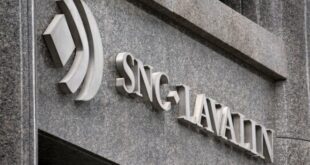Markets anticipate U.S. central bank will start cutting interest rates in May.
U.S. consumer prices increased more than expected in January amid rises in the costs of shelter and health care, but it likely won’t change expectations that the Federal Reserve will start cutting interest rates in the first half of 2024.
The consumer price index (CPI) increased 0.3 per cent last month after gaining 0.2 per cent in December, the Bureau of Labor Statistics said on Tuesday. Annual revisions to the CPI data published last Friday were mixed, but generally showed inflation was on a downward trend after surging in 2022.
In the 12 months through January, the CPI increased 3.1 per cent, following a 3.4 per cent advance in December. Economists polled by Reuters had forecast the CPI gaining 0.2 per cent on the month and rising 2.9 per cent year-on-year. The annual increase in consumer prices has moderated from a peak of 9.1 per cent in June 2022.
The Bureau of Labor Statistics updated the seasonal factors, the model it uses to strip out seasonal fluctuations from the data. New weights, which saw the housing share rising and that of new and used cars lowered, were used to calculate the January CPI data.
That could partly explain the stronger than expected readings, which economists said were likely temporary.
Policymakers in no hurry to lower rates
Financial markets anticipate that the U.S. central bank will start cutting interest rates in May, though some economists are gravitating toward June, given the still tight labour market and persistently elevated services inflation.
Policymakers have said they are in no hurry to start lowering borrowing costs and want convincing evidence that inflation is on a sustained slow path.
While significant progress has been made, risks remain, including the potential for renewed supply chain problems due to Red Sea shipping disruptions and drought in the Panama Canal. The outlook for inflation, however, remains fairly favourable as the increase in rents is expected to moderate this year.
Since March 2022, the Fed has raised its policy rate by 525 basis points to the current 5.25 per cent to 5.50 per cent range.
Excluding the volatile food and energy components, the CPI rose 0.4 per cent last month after increasing 0.3 per cent in December. In addition to rents, beginning of the year price increases also likely accounted for rise in the so-called core CPI.
The core CPI advanced 3.9 per cent year-on-year in January, matching December’s increase.
Though consumer prices remain elevated, measures tracked by the U.S. central bank for its two per cent inflation target have improved considerably. The increase in the personal consumption expenditures (PCE) price index slowed to an annualized rate of 1.7 per cent in the fourth quarter, from a 2.6 per cent pace in the July-September quarter. The core PCE price index rose at a 2.0 per cent rate, unchanged from the third quarter.
*****
Credit belongs to : www.cbc.ca
 Atin Ito First Filipino Community Newspaper in Ontario
Atin Ito First Filipino Community Newspaper in Ontario






